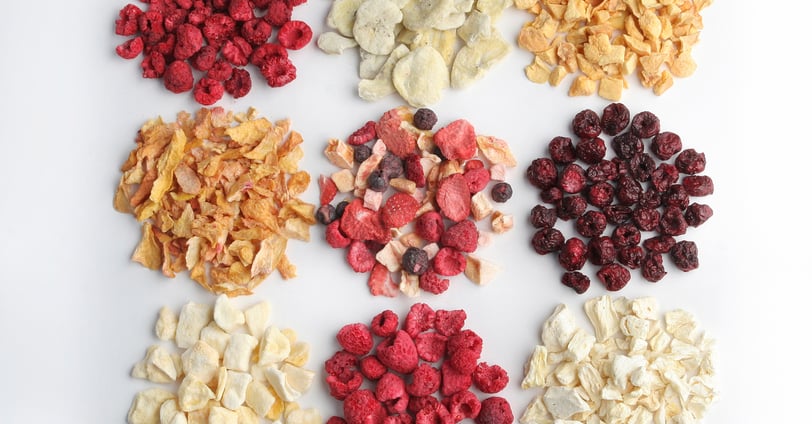Freeze Drying


Something we have recently added to our home is a freeze dryer. We are using it for a couple different things. One being food preservation. The other as a source of income. If you don't know anything about freeze drying, I'll explain a little about it. Yes, you can freeze dry almost everything from meat to candy and even ice cream.
Freeze-drying, also known as lyophilization, is a method of food preservation that involves removing moisture from food by freezing it and then sublimating the frozen water directly from solid to gas without passing through the liquid phase.
Freeze-drying typically involves three stages: freezing, primary drying, and secondary drying. During the freezing stage, the food is quickly frozen at low temperatures to form ice crystals. In the primary drying stage, the pressure in the drying chamber is lowered, and heat is applied to the food to cause the ice to sublimate into vapor. In the secondary drying stage, any remaining moisture is removed from the food by continuing to heat it at a slightly higher temperature than in the primary drying stage.
The result of freeze-drying is a dry, lightweight product that can be rehydrated with water or other liquids. Freeze-dried food is shelf-stable and can last for many years without refrigeration or special storage conditions. Freeze-drying is commonly used for preserving foods such as fruits, vegetables, meats, and dairy products, as well as for making instant coffee and other powdered beverages.
Freeze-drying food can be an excellent way to preserve food for a homestead in a few different ways:
Increased shelf life: Freeze-drying can significantly extend the shelf life of food by removing moisture, which inhibits the growth of bacteria, yeast, and mold.
Improved food quality: Because freeze-drying removes moisture, it can help maintain the nutritional content, color, texture, and flavor of the food. Freeze-dried food also tends to be lighter and easier to store and transport than fresh or canned food.
Emergency preparedness: Having freeze-dried food on hand can be beneficial in case of an emergency or natural disaster when fresh food may not be available.
Convenience: Freeze-dried food is easy to prepare and can be stored for long periods, making it a convenient option for busy homesteaders who may not have time to prepare fresh meals every day.
Overall, freeze-drying food can be an excellent addition to a homestead, providing both practical benefits and improving the quality of the food.
A homestead can make money off of freeze-drying in a few different ways:
Selling freeze-dried food: If you have excess produce from your homestead, you can freeze-dry it and sell it to others. Freeze-dried food can fetch a premium price because of its long shelf life, convenience, and nutritional benefits.
Custom freeze-drying services: You can offer freeze-drying services to others who don't have the equipment or knowledge to do it themselves. This could include freeze-drying produce, meat, or other food products for individuals or businesses.
Value-added products: You can also create value-added products using freeze-dried ingredients. For example, you could make freeze-dried fruit snacks or powdered soup mixes that can be rehydrated with water.
Partnership with local businesses: You can partner with local restaurants or food businesses to supply them with freeze-dried ingredients or products that they can use in their recipes.
Overall, freeze-drying can be a profitable venture for a homestead, especially if you have excess produce or are willing to offer custom services to others. It can also be an excellent way to diversify your income streams and add value to your homestead products.
